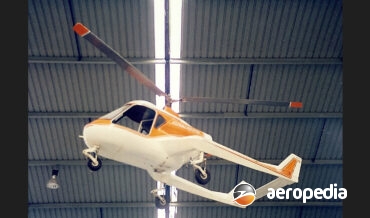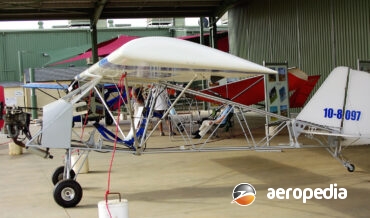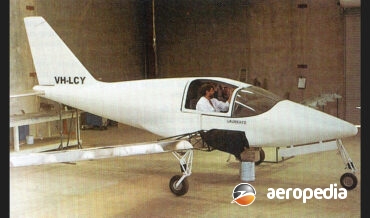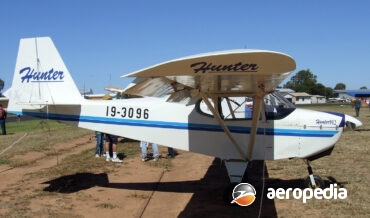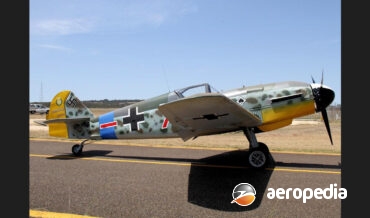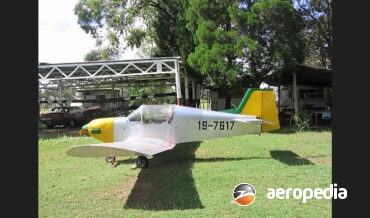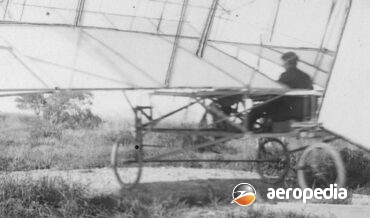All Contents
Contents
The Voodoo is an Australian designed two-seat light touring monoplane powered by a 119-kw (160-hp) Lycoming O-320 engine and with an empty weight of 494 kg (1,090 lb).
David C. Eyre
- May 25, 2020
Mr Terrence Kronke was well known in aviation circles as the designer and builder of scale replicas of World War II aircraft, amongst his aircraft being a Supermarine Spitfire with a five-litre Chevrolet V-8 engine.
David C. Eyre
- May 25, 2020
M-Squared was founded in 1996 by Paul Mather to design and produce parts of existing ultralight aircraft.
David C. Eyre
- May 25, 2020
Mr John Lowther in New Zealand designed and built a 75% scale replica of a Sopwith F.1 Camel, this being the second aircraft he had designed himself and the ninth light aircraft he had built.
David C. Eyre
- May 25, 2020
Mr A McMullen of Fremantle, WA built an aircraft named The Boomerang of his own design. On 12 January 1911 Joseph Hammond examined the machine and said it showed great promise, that it will maintain its poise or equilibrium automatically.
David C. Eyre
- May 25, 2020
Mr C Lindsay-Campbell designed and built an aircraft described as an aero-marine monoplane.
David C. Eyre
- May 25, 2020
Very little is known about this machine other than it was a single-seat gyrocopter of fibreglass construction with a three blade rotor and fitted with a tricycle undercarriage and twin booms carrying the tail.
David C. Eyre
- May 25, 2020
The PB-5 is a single-seat high wing ultralight aircraft fitted with a tractor engine and built of steel tube with fabric covering.
David C. Eyre
- May 25, 2020
Mr Mac McKenzie is a gyrocopter enthusiast on the north island of New Zealand and in about 2007 commenced the construction of a 70 percent replica of the Cierva C.30 gyrocopter, examples of the original full-scale machine being flown in a number of countries around the world in the 1930s,
David C. Eyre
- May 25, 2020
A Mr Lewis built a monoplane at Diggers Rest, Vic in 1910 and it was fitted with a JAP engine.
David C. Eyre
- May 25, 2020
Mr McKenzie, a New Zealander, designed and partially built a biplane along the lines of an early French Breguet, the latter having been placed on display at the Olympia Aero Show in London In March 1909.
David C. Eyre
- May 25, 2020
The LA-122 Preceptor is an Australian designed two-seat twin-engine training monoplane designed by the Laureate Aircraft Company.
David C. Eyre
- May 25, 2020
The Mayfly 3 was designed by Mr William Watley who had previously built in the 1940s a Mignet HM 290, which made two flights, and a Jodel D-9 which operated from Gatton in Queensland for some years.
David C. Eyre
- May 25, 2020
The Hobbit was an ultra-light designed and built in Australia for the local market and was powered by a 16.4 kw (22-hp) Skylark engine.
David C. Eyre
- May 25, 2020
This was a light homebuilt aircraft designed and built by Sydney Gordon Gooding DFC. Mr Gooding was born at Clare, SA on 21 September 1915 and learned to fly at AFTS Narrandera on DH-82s.
David C. Eyre
- May 25, 2020
The Hunter is a two-seat ultra-light aircraft available in kit form and powered by a Rotax 912UL four-cylinder four-stroke liquid-and-air-cooled engine.
David C. Eyre
- May 25, 2020
Little is known about this machine. The machine was designed and built in South Australia and comprised a metal fuselage and the framework of a cycle mounted thereon and a pylon above the cycle seat and a drive to the two-blade helicopter rotor and the two-blade tail rotor.
David C. Eyre
- May 25, 2020
This was a small ultralight aircraft designed by Robert Labahan and at least one example was registered, this becoming 10-1138 on 16 October 1989 and was fitted with a Rotax 503 engine.
David C. Eyre
- May 25, 2020
This is a company which designs and builds to military grade powered paragliding trikes for military use, border security and law enforcement applications.
David C. Eyre
- May 25, 2020
The Skitz was a one-off homebuilt light aircraft designed and built by Robert Noble and was registered as 19-3937 (c/n 6) on 1 July 2003 with Recreation Aviation Australia.
David C. Eyre
- May 25, 2020
Over the years a small number of scale replicas, usually 75%, of the Bf 109 have been privately built from scratch in Australia.
David C. Eyre
- May 25, 2020
Also known as the Owen Dull Gyrocopter, this company based at Roadvale, Qld has built a number of single and two-seat gyrocopters for the Australian market, including G-121, G-132, G-153, and G-241, the latter being similar in appearance to a RAF 2000.
David C. Eyre
- May 25, 2020
Ronald Mellow, a resident of Queensland, in the 21st Century has designed and built two light aircraft. The second [registration 19-7817] was of all metal construction and was a low-wing monoplane with an enclosed cockpit and fitted with a single-ignition Volkswagen conversion [1835-cc].
David C. Eyre
- May 25, 2020
This aircraft was a light parasol-wing light aircraft built and flown in the 1930s in the Newcastle area.
David C. Eyre
- May 25, 2020
The Firstar is a two-seat, low-wing monoplane with a tailwheel undercarriage built in the amateur built category.
David C. Eyre
- May 25, 2020
The P-51B is a two-thirds scale replica of the North American P-51B World War II fighter and is of all-metal construction and designed and built in Australia.
David C. Eyre
- May 25, 2020
In 1925 George Murray of Goulburn, NSW, a carpenter, commenced construction of a small aircraft powered by a twin-cylinder converted motor-cycle engine.
David C. Eyre
- May 25, 2020
Mr Howard Morris, a commercial pilot, in the late 1930s showed some interest in aviation and built a half-size non-flying replica of a Mignet Pou de Ciel (Flying Flea).
David C. Eyre
- May 25, 2020
Reginald Ouston, a New Zealander, came to Australia when quite young and in about 1930 commenced construction of a light aircraft of his own design with a Le Rhone engine, this being a two seater.
David C. Eyre
- May 25, 2020
Initially based in Sydney, Gary Morgan has been involved in the design of light aircraft for many years and this culminated in the design and production of the kit aircraft named the Cheetah, Cougar and Cheyenne.
David C. Eyre
- May 25, 2020
Records indicate Mr J C Orrock of Endiena, SA, built a light aircraft in 1928. Little is known about the aircraft and it is not known if it was completed or flown.
David C. Eyre
- May 25, 2020
This aircraft was a one-off design by Douglas McIlwraith based in Biddaddaba, Qld who initially wished to build a replica of a Monocoupe and in the end built a biplane of his own design fitted with a six-cylinder Jabiru engine providing 89-kw (120-hp), this engine being fitted with liquid-cooled heads.
David C. Eyre
- May 25, 2020
This one-off design was first registered as 10-0068 on 8 April 1988 and operated for a period until withdrawn from use.
David C. Eyre
- May 25, 2020
The Mp3 was an Australian designed and built light single-seat light aircraft and was produced in the 1980s for the local market.
David C. Eyre
- May 25, 2020
In 1908 Bertram Ogilvie, a resident of Napier on the north island of New Zealand, with the assistance of Messrs R Goodger, J Munro, H Suckling and other local friends, commenced the construction of a biplane of his own design.
David C. Eyre
- May 25, 2020
The Minimoth was a light sporting biplane design for the sport pilot developed and marketed in the late 1970s. It was of wooden construction with fabric covering.
David C. Eyre
- May 25, 2020
The Normoyle Mk I, one example of which has been completed as 19-3669, is an Austflight Drifter built by Patrick Normoyle in South Australia, his aircraft looking much like the Drifter but has some major modifications, particularly to the nose and windshield area.
David C. Eyre
- May 25, 2020
In 1930 Lawrence Schaeffer of Loxton, SA commenced construction of a two-seat parasol wing monoplane to be fitted with a converted Dodge four-cylinder motor car engine.
David C. Eyre
- May 25, 2020
The Maya Ultralight was a single-seat ultralight aircraft aircraft with an enclosed cabin and powered by a 21-kw (28-hp) Konig SD-570 four-cylinder engine with an adjustable propeller.
David C. Eyre
- May 25, 2020
This was a one-off ultra-light amphibian built it is believed in Queensland, the prototype was completed becoming 19-4649 (c/n 3) and it was registered on 12 April 2006.
David C. Eyre
- May 25, 2020
Recent Comments
Archives
Categories
- No categories
Categories
- No categories
Latest Posts
Newsletter



